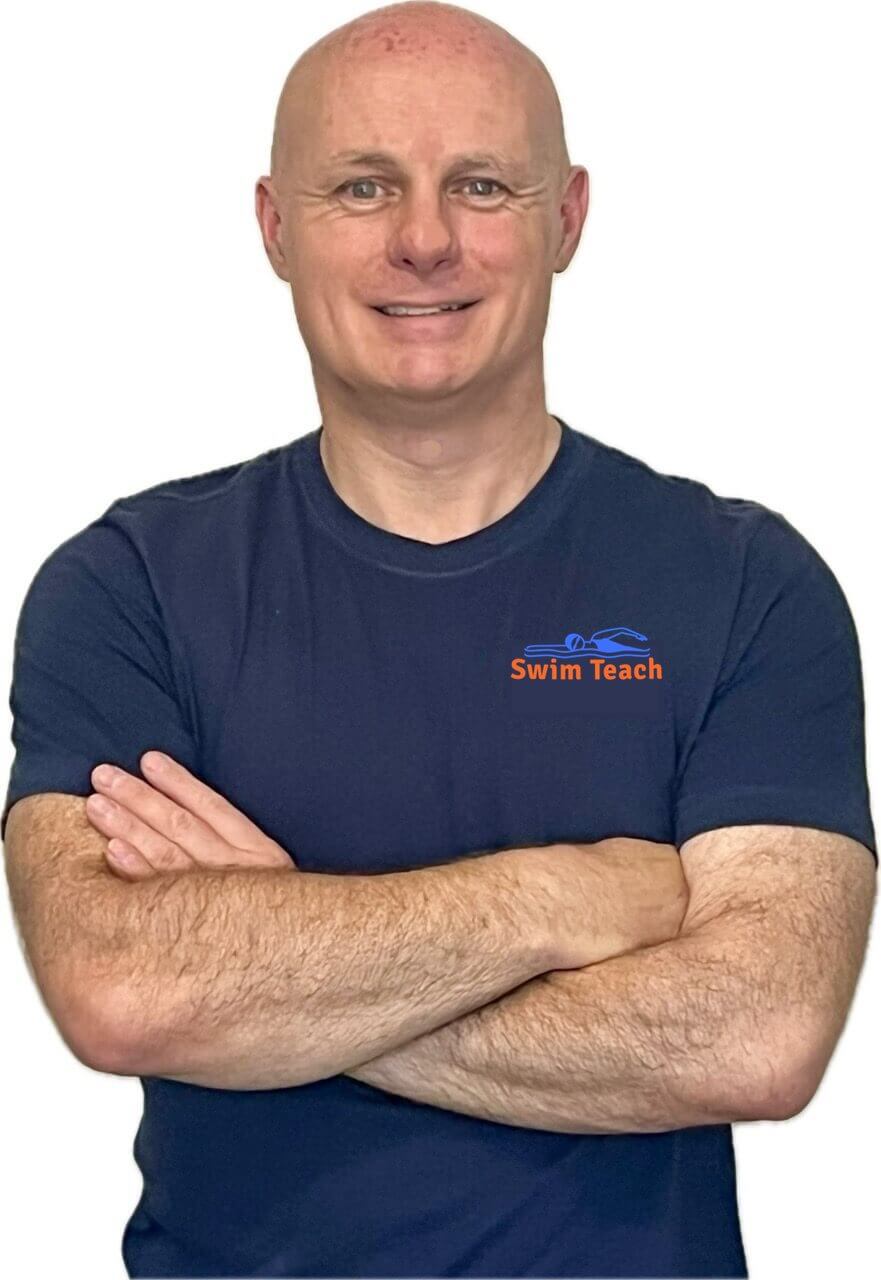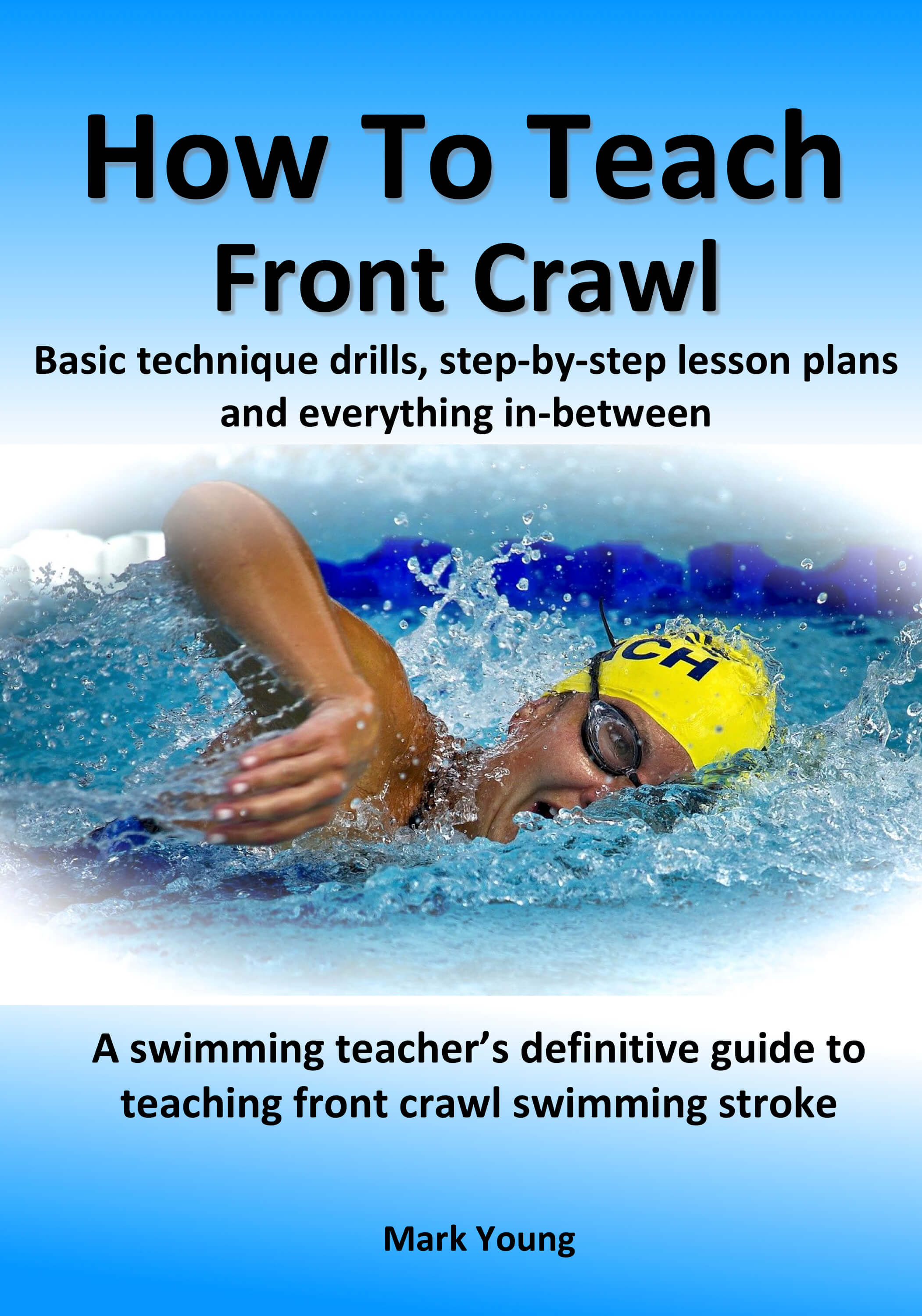- Swim Teach Home
- teaching tips
- How to Teach Freestyle Swimming
How To Teach Freestyle Swimming
Learning how to teach freestyle swimming can be both a hugely rewarding experience. Whether you’re a swimming teacher, a parent, or a beginner instructor, guiding someone through the fundamentals of freestyle - also known as front crawl - requires a blend of technique, patience, and motivation. My guide outlines specific lesson plans for each part of the stroke, plus key technique points and common mistakes to watch out for.
The tools you need the learn how to teach freestyle swimming are right here...
Body Position
The position and shape of the body is crucial to a streamlined stroke, so teaching front crawl body position correctly is an essential starting point. Get this right and your swimmer has the perfect platform to learn and perfect a smooth swimming stroke.
Key parts to look out for:
- Head remains still and central
- Face is submerged with the water line around the brow
- Shoulders should be level and square
- Legs are in line with the body
- Hands and feet should be together
- Overall body position should be streamlined
Common mistakes:
- Push off is too weak
- Arms stretch out in front after the push off
- Head in not central
- Hands or feet are apart
- Overall body position is not straight or streamlined
Lesson 1: Body Position
Aim: to introduce basic front crawl body position
Equipment: floaters, sinkers and buoyancy aids as needed
|
Exercise/Activity Entry: swivel entry Warm up: 2 widths any stroke on the front 1. standing holding the poolside and submerging 2. submerg the face whilst horizontal, holding side 3. push and glide with floats under each arm 4. push and glide with one float in front 5. push and glide without buoyancy aids 6. push and glide adding front crawl stroke Contrasting activity: submerging to retrieve an object submerging to retrieve objects placed apart Exit: using the pool steps or over the pool side |
Teaching Point enter slowly take your time deep breath and relax arms out stretched relax and glide stretch out, point toes hands together stretch out and relax take your time deep breath and relax take your time |
Leg Kick
Getting pupils to kick with a relaxed and smooth kicking action is essential. Front crawl leg kick should be continuous, alternating and in balance with the arms.
Key parts to look out for:
- Kick come from the hip
- Kick is continuous and alternating
- Knee is only slightly bent
- Legs are close together as they kick
- Ankles are relaxed and toes pointed
- Kick should just break the water surface
Common mistakes:
- Feet come out of the water
- Kick comes from the knee
- Legs are too deep as they kick
From my personal experience...

"I have taught many pupils over the years, both children and adults, who have it in their minds that the harder they kick, the faster and further they will swim. This is of course the quickest way to exhaustion and very little distance gained! The key message to get across to your pupils is to keep their leg kicks steady, relaxed and continuous. Get them to focus on making their legs and feet behave like fins or flippers, and watch their stroke move to a new level."
Lesson 2: Leg Kick
Aim: to learn front crawl leg kick and introduce breathing
Equipment: floaters or kickboards and buoyancy aids as needed
|
Exercise/Activity Entry: swivel entry Warm up: 2 widths any stroke on the front 1. sitting on the poolside demonstrating kicking action 2. holding the poolside and kicking 3. kicking with floats under each arm 4. kick with one float in front 5. holding the poolside blowing bubbles 6. kicking with floats under each arm adding blowing bubbles Contrasting activity: prone star float with or without buoyancy aids supine star float with or without buoyancy aids Exit: using the pool steps or over the pool side |
Teaching Point enter slowly take your time pointed toes kick with straight legs kick from your hips kick with floppy feet blow gently kick and blow at the same time hold your breath relax and stay still take your time |
Arm Action
Front crawl arm pull technique provides most of the propulsion for this swimming stroke. Teaching swimmers to pull with a smooth, continuous and controlled action is essential to swimming and balanced and efficient swimming stroke.
Key parts to look out for:
- Finger tips enter first with thumb side down
- Fingers should be together
- Pull should be under the body
- Pull through to the hips
- Elbow exists the water first
- Fingers clear the water on recovery
- Hand enters the water inline with side of the head
Common mistakes:
- Fingers are apart
- Pull is to short and not to the thigh
- Lack of power in the pull
- Arm pull is too deep underwater
- Elbow not exiting first
- Arms are too straight on recovery
Lesson 3: Arm Pull
Aim: to introduce basic front crawl arm action
Equipment: floaters or kickboards and buoyancy aids as needed
|
Exercise/Activity Entry: swivel entry Warm up: 2 widths any stroke on the front 1. standing on the poolside demonstrating arm action 2. walking through the water using arms 3. single arm action with float held in one hand 4. repeat the above with the opposite arm 5. front crawl catch up holding a float 6. full stroke front crawl Contrasting activity: push and glide supine push and glide Exit: using the pool steps or over the pool side |
Teaching Point enter slowly take your time continuous smooth action keep fingers together elbow exits first finger tips enter first reach over the water smooth continuous arms stretch out long push your hips up take your time |
Breathing Technique
Front crawl breathing technique requires and carefully timed roll of the head, performed in a way that maintains a continuous arm action without disturbing body position and overall efficiency.
Key parts to look out for:
- Head moves enough for the mouth to clear the water
- Breathing occurs when the head is turned to the side
- Breathing out should be slow and controlled
- Breathing should be in and out from the mouth
Common mistakes:
- Turning the head towards the straight arm
- Turning the head excessively (to look upwards)
- Breathing out through the nose
- Holding the breath
- Lifting the head and looking forward when breathing
Try this…

"Using the perfect teaching points is crucial in getting your pupils to roll their heads to the side when breathing and avoiding lifting their heads, which can ruin their body position. When teaching children, try getting them to ‘look at the fishes and listen to the fishes’ to encourage rolling their heads instead of lifting them up. When teaching adults, get them to ‘look at their shoulder’ as they breathe. Try these teaching points if your pupils are finding rolling their heads difficult."
Lesson 4: Breathing
Aim: to introduce basic front crawl breathing technique
Equipment: floaters or kickboards, buoyancy aids and sinkers as needed
|
Exercise/Activity Entry: swivel entry Warm up: 2 widths any stroke on the front 1. breathing while holding the poolside 2. repeat the above with rolling the head to the side 3. holding a float with a diagonal grip 4. single arm pull with float in one hand 5. repeat the above with the opposite arm 6. full stroke front crawl Contrasting activity: head first surface dive to collect sinkers prone star floats Exit: using the pool steps or over the pool side |
Teaching Point enter slowly take your time blow slowly and gently look to your shoulder breath through the mouth turn to the pulling side breathe as the arm pulls head returns to central dig yourself to the bottom deep breath and relax take your time |
Timing and Coordination
Freestyle swimming stroke should be balanced and controlled at all times. The timing of the arm pulls and leg kicks are essential to maintaining a smooth and effortless swimming stroke.
Key parts to look out for:
- Smooth and continuous arm pulls, without pause
- Relaxed and continuous leg kicks
Common mistakes:
- One leg kick per arm pull (although a 'one beat cycle' is common in some adult beginners)
- Continuous leg kick but not enough arm pulls
- Arm pulls are too irregular
Lesson 5: Timing
Aim: to introduce a basic front crawl timing pattern
Equipment: floaters or kickboards, buoyancy aids and sinkers as needed
|
Exercise/Activity Entry: swivel entry Warm up: 2 widths any stroke on the front 1. push and glide from the poolside 2. push and glide holding a float, adding leg kicks 3. Alternate arm pulls holding a float in front 4. Front crawl 'catch up' 5. Push and glide adding kicks, then arm pulls 6. full stroke front crawl Contrasting activity: supine star floats submerge to collect sinkers Exit: using the pool steps or over the pool side |
Teaching Point enter slowly take your time hands and feet together count kicks '1,2,3,4,5,6' count '1,2,3' each pull continuous leg kicks count your kicks continuous arms and legs look up at the sky deep breath and relax take your time |
How To Teach Freestyle Swimming - All In One Book
My hugely popular book 'How To Teach Front Crawl' contains lesson plans and some basic drills to add to your swimming lessons. All of the plans include assessment tools, meaning you spend less time planning and more time focusing on the quality of your teaching.
Lesson plans, assessment tools and a whole load more...
Grab a copy of my popular book 'How To Teach Front Crawl' and plan your swimming lessons to get the best out of your swimmers. (click here for an instant preview)
From basic technique drills, to advanced lesson plans and assessment tools - get the swimming teacher's definitive guide to teaching front crawl. Click here for an INSTANT preview.
I am a member of the Amazon Associates Program and I will earn a commission from qualifying purchases at no extra cost to you.



